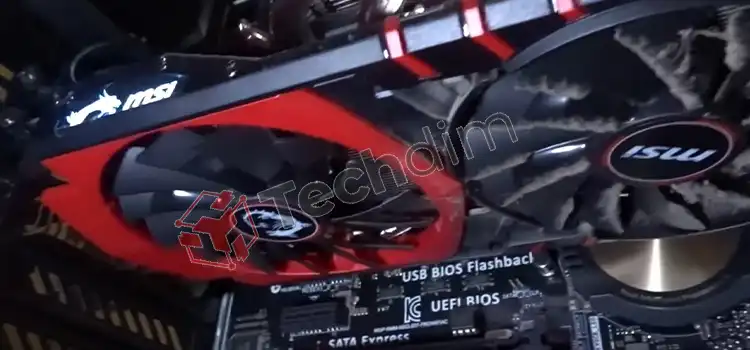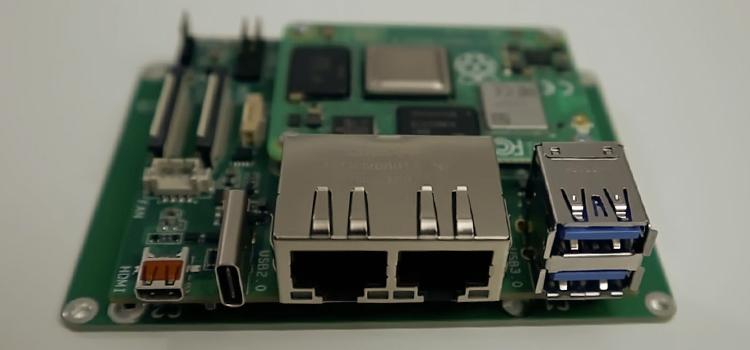[5 Fixes] Graphics Card Fans Turn On and Off
Your GPU fans turning on and off is completely normal unless it is at an odd stage. Loose RAM sticks and faulty CMOS batteries are some of the most common reasons why GPU fans start and stop erratically.
You can reinsert the RAM sticks or CMOS battery to resolve this issue. Moreover, you can try running a troubleshooter or updating your GPU driver. This article will provide you with more possible reasons and dive deep into their fixes concerning this particular issue.

Is It Abnormal For GPU Fans To Keep Turning On and Off
A graphics card fan should not need to run constantly under normal conditions. The settings on them cause them to spin up anytime they may need to address GPU-related heat issues. You might be able to change these options on your own to run the fans continually.
However, there should not be much need for this. Moreover, forcing the mechanical fans to work continuously can reduce the motor’s lifespan.
What are the Criteria For a GPU Fan To Stop
It is typical for GPU fans to remain off unless the card reaches a certain temperature or the system is under load. This is because if the temperature of the card is already low, it is inefficient for the GPU fans to run continuously. That is why the GPU fans stop when the load is small.
Reasons Behind Why Do Gpu Fans Turn On and Off
Only when GPUs reach specific temperatures do the fans begin to turn. The temperature at which fans start to spin can vary, but 50 to 55 degrees Celsius is a typical threshold.
It is not entirely odd for the GPU fans to start spinning and then stop suddenly. In fact, it is the norm. As soon as you start your PC, the GPU fans usually spin and stop after a while when you reach a temperature threshold.
However, if your fans fail to work right, the GPU is sure to sustain damage. Some individuals face the issue of their graphics processor’s fans continually turning on and off. Although fans are intended to become more active as the components they are meant to cool, become hotter, it is not always the case that they suddenly become inactive.
If you are stressed about why your GPU fans are frequently turning on and off, there could be a multitude of reasons. Some of them will be discussed in this section.
1. Loose RAM Sticks
Users have reported that loose RAM sticks can make the fans start whirling repeatedly before stopping. By taking out and reinstalling their RAM modules, those individuals were able to fix the problem.
2. Faulty or Loose CMOS Battery
Only when GPUs reach specific temperatures do the fans begin to turn. The temperature at which fans begin to spin can vary, but 50 to 55 degrees Celsius is a typical threshold.
3. Different Fan Modes
Different settings on some fans may only allow them to operate at particular speeds or times. For instance, the fan on your graphics processor can have an active mode that completely silences it. The fan may work harder and become noisier when you are using a demanding application that the GPU must handle in order to keep the component cool when heat accumulates around it.
While this is unquestionably helpful, it can also result in the computer as a whole being extremely noisy over time. Manufacturers are aware of how unpleasant this can be. Therefore, many of them have settings for silent operation, which typically entails turning off the fan.
4. Extra Load on the GPU
A GPU fan should not be slowed down or turned off unless the component does not need to work hard. The GPU may need to work harder rather suddenly if you suddenly increase the amount of intensive computer work you are doing. If this is the case, it also suggests that the fan may turn on and start spinning.
5. Low Threshold for Low Temperatures
There may be a low threshold for these temperatures on your fan for the graphics processor. You might notice that the fan starts spinning, cools the computer down to below that line, and then stops again if your computer’s activities are right at or around that line.
The Solution to GPU Fans Turning On and Off
There are some fixes you can try if you see your GPU fans abruptly turning on and off. This section will cover all those solution methods.
Method 1: Run the Hardware and Devices Troubleshooter
Press S while holding down the Windows key to view the search tool. Then select Command Prompt in the search tool after entering the CMD search term. Open the hardware troubleshooter by typing “msdt.exe -id DeviceDiagnostic” and hitting enter.
In the troubleshooter’s window, select Apply repairs automatically after clicking Advanced. Finally, click “Next” and select “Apply”.
Method 2: Update the GPU Driver
Video cards, software, sound cards, and other pieces of hardware cannot be handled by a computer. That being said, they must be controlled by a driver.
If you are completely aware of the drivers your PC needs, you can update the drivers manually. Although software created specifically for this purpose will yield the best results.
Method 3: Reinsert the CMOS Battery
You will locate the CMOS battery of your motherboard once you open your PC case. It is a small lithium battery which is pretty easy to find. Remove that battery and wait for a couple of minutes before rigidly reinserting it into the motherboard.
Method 4: Connect the GPU Properly to the Motherboard
Ensure that all of the cable connectors on your graphics card are plugged in. You’ll have to open up the desktop computer to do that. Next, make sure none of the PCIe wires for the GPU are loose. Verify that all GPU cables are fully inserted.
Method 5: Clean and Reinsert the RAM Modules
Once your PC is turned off, remove the power cable and then the RAM modules. Clean the RAM sticks and reinsert them back into the motherboard properly. This is one of the most common yet effective solutions.
How Do I Know If My GPU Fan is Dying?
If your GPU’s fans make an odd noise when operating under load or if one or more of them suddenly cease working, they may be on their last legs. Checking the temperature of your GPU from here is crucial.
Should the GPU Fan Always Run?
The GPU fans typically only turn on when the GPU temperature reaches a predetermined level. The fans won’t turn on as long as it falls below this threshold. As a result, they probably won’t start up when you switch on the computer.
Conclusion
The concerned issue can be resolved with resolutions outlined in this article. However, if you still fail to fix your GPU fans turning on and off, you might require the help of a renowned computer repair store. Addressing such an issue at the earliest moment may save your PC from early failure.
Subscribe to our newsletter
& plug into
the world of technology





